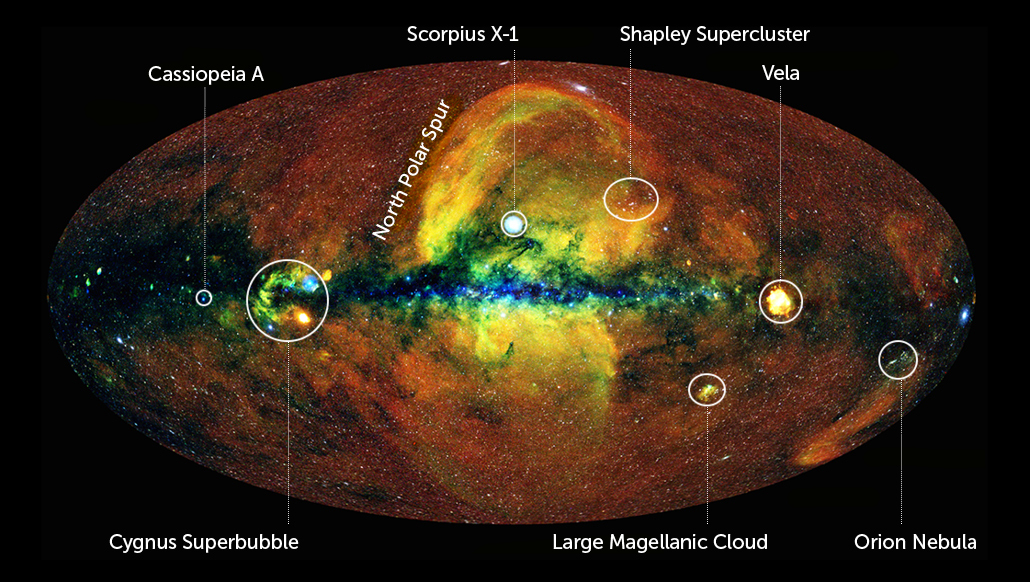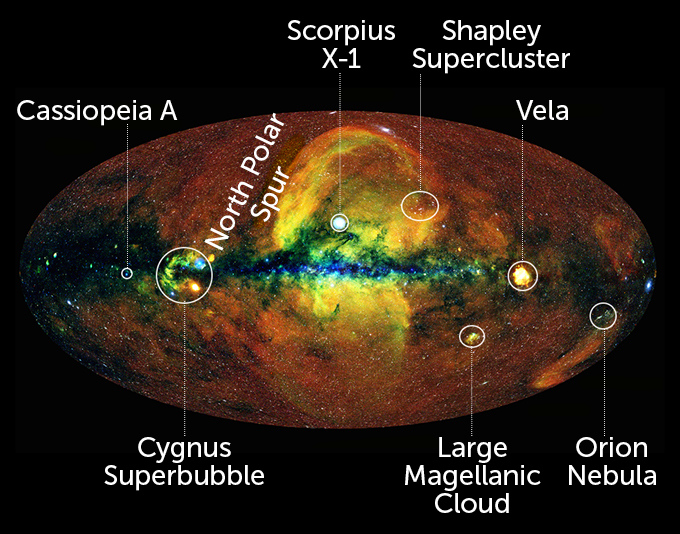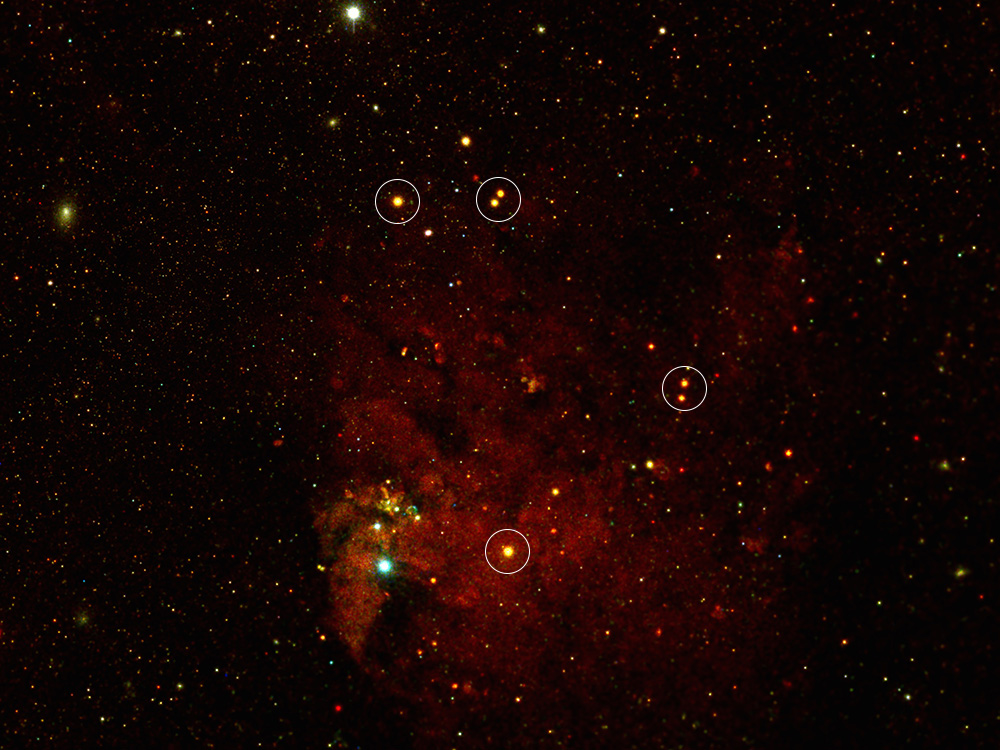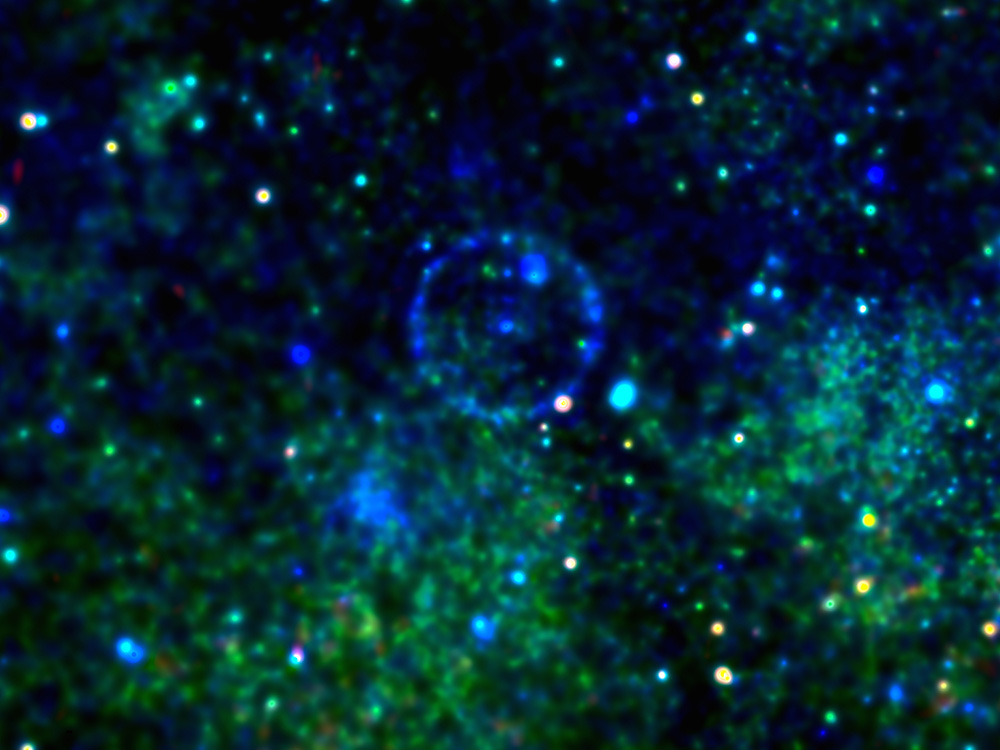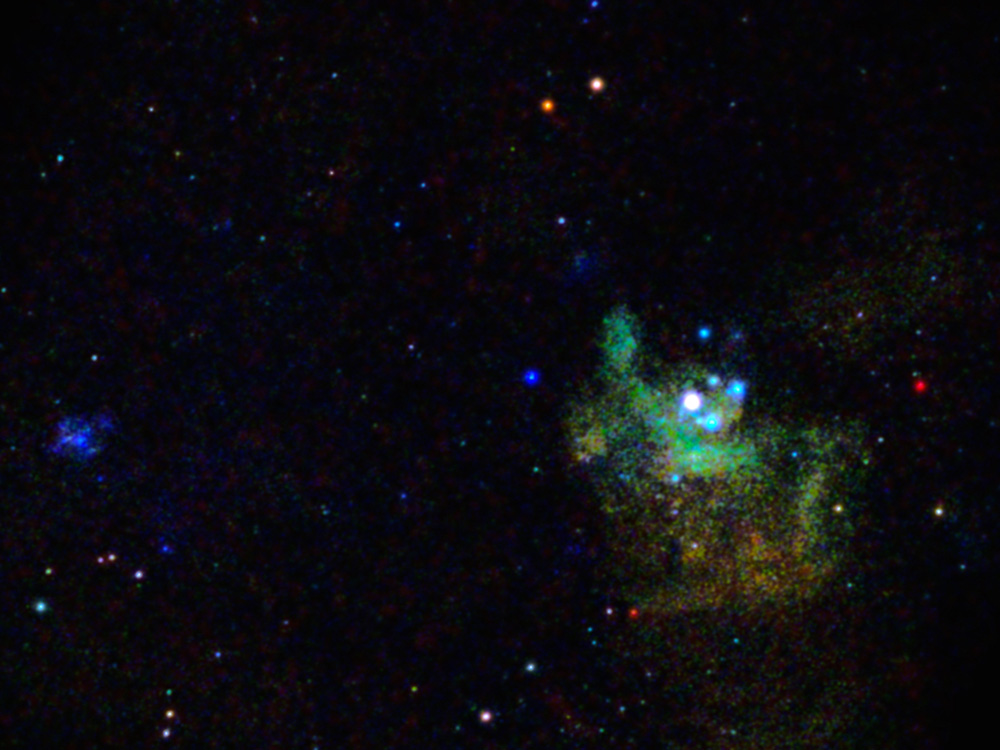This is the most comprehensive X-ray map of the sky ever made
Scientists used data from the first full scan of the sky made by the eROSITA X-ray telescope

A new X-ray map of the entire sky reveals all kinds of energetic objects and phenomena in the Milky Way and beyond.
Jeremy Sanders, Hermann Brunner and the eSASS team/MPE, Eugene Churazov, Marat Gilfanov (on behalf of IKI)
A new map of the entire sky, as seen in X-rays, looks deeper into space than any other of its kind.
The map, released June 19, is based on data from the first full scan of the sky made by the eROSITA X-ray telescope onboard the Russian-German SRG spacecraft, which launched in July 2019. The six-month, all-sky survey, which began in December and wrapped up in June, is only the first of eight total sky surveys that eROSITA will perform over the next few years. But this sweep alone cataloged some 1.1 million X-ray sources across the cosmos — just about doubling the number of known X-ray emitters in the universe.
These hot and energetic objects include Milky Way stars and supermassive black holes at the centers of other galaxies, some of which are billions of light-years away and date back to when the universe was just one-tenth of its current age.
eROSITA’s new map reveals objects about four times as faint as could be seen in the last survey of the whole X-ray sky, conducted by the ROSAT space telescope in the 1990s (SN: 6/29/91). The new images “are just spectacular to look at,” says Harvey Tananbaum, an astrophysicist at the Harvard-Smithsonian Center for Astrophysics in Cambridge, Mass., not involved in the mission. “You have this tremendous capability of looking at the near and the far … and then, of course, delving in detail to the parts of the images that you’re most interested in.”
eROSITA can flag potentially interesting X-ray phenomena, such as flares from stars getting shredded by black holes, which other telescopes with narrower fields of view but better vision can then investigate in detail, Tananbaum says. The new map also allows astronomers to probe enigmatic X-ray features, such as a giant arc of radiation above the plane of the Milky Way called the North Polar Spur.
This X-ray feature may be left over from a nearby supernova explosion, or it might be related to the huge blobs of gas on either side of the Milky Way disk, known as Fermi Bubbles, says eROSITA team member Peter Predehl, an X-ray astronomer at the Max Planck Institute for Extraterrestrial Physics in Garching, Germany (SN:6/8/20). eROSITA observations could help the Russian and German teams involved in the mission figure out what the spur is.
About 20 percent of the marks on eROSITA’s map are stars in the Milky Way with intense magnetic fields and hot coronae. Scattered among these are star systems containing neutron stars, black holes and white dwarfs, and remnants of supernova explosions. eROSITA also caught several fleeting bursts from events like stellar collisions.
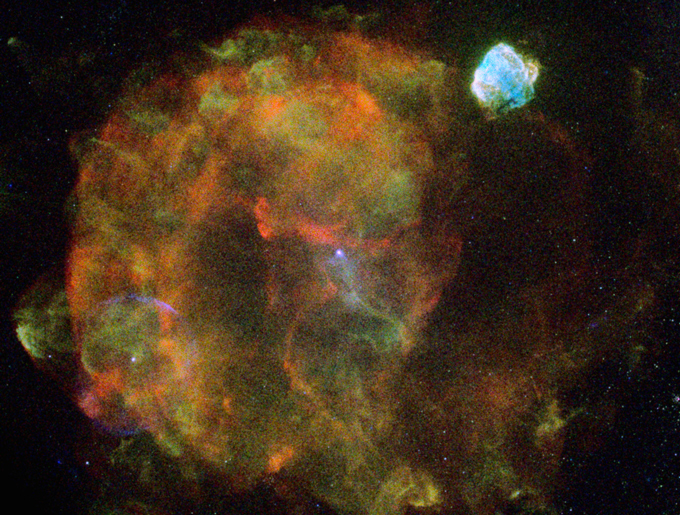
Beyond the Milky Way, most of the X-ray emitters that eROSITA found are supermassive black holes gobbling up matter at the centers of other galaxies (SN: 6/18/20). Such active galactic nuclei comprise 77 percent of the catalog.
Distant clusters of galaxies made up another 2 percent of eROSITA’s haul. These clusters were visible to the telescope thanks to the piping hot gas that fills the space between galaxies in each cluster, which emits an X-ray glow.
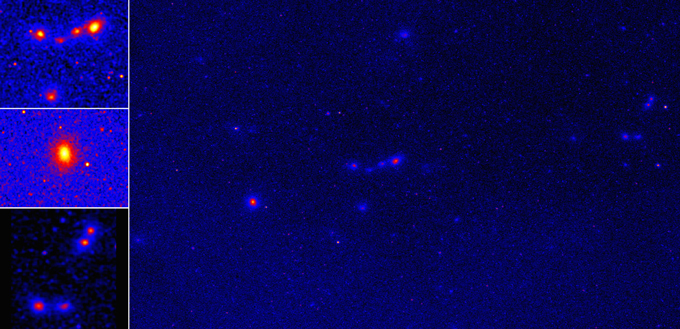
“At present, we probably know about a little less than 8,000 clusters of galaxies,” says Craig Sarazin, an astronomer at the University of Virginia in Charlottesville not involved in the work. But over its four-year mission, eROSITA is expected to find a total of 50,000 to 100,000 clusters. In the first sweep alone, it picked up about 20,000.
That census could give astronomers a much better sense of the sizes and distributions of galaxy clusters over cosmic history, Sarazin says. And this, in turn, may give new insight into features of the universe that govern cluster formation and evolution. That includes the precise amount of invisible, gravitationally binding dark matter out there, and how fast the universe is expanding.
Closer to home, observations of supernova remnants could help clear up some confusion about the life cycles of big stars, says eROSITA team member Andrea Merloni, an astronomer also at the Max Planck Institute for Extraterrestrial Physics. Past X-ray surveys have found fewer supernova remnants than theorists expect to see, based on how many massive stars they think have blown up over the course of the galaxy’s history. But eROSITA observations are now revealing plumes of debris that could be previously overlooked stellar graves. “Maybe we’ll start balancing this budget between the expected number of supernovae and the ones that we are detecting,” Merloni says.
eROSITA is now beginning its second six-month, all-sky survey. When combined, the telescope’s eight total maps will be able to reveal objects one-fifth as bright as those that could be seen on a single map. That not only allows astronomers to see more X-ray sources in more detail, but track how objects in the X-ray sky are changing over time.
